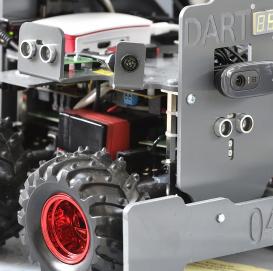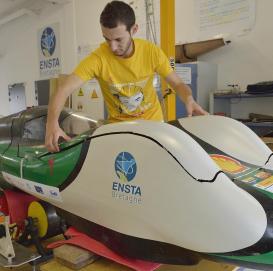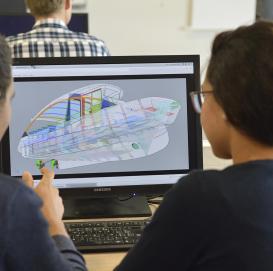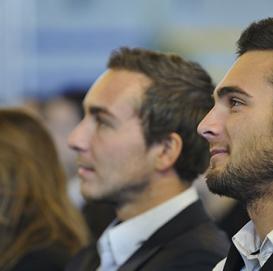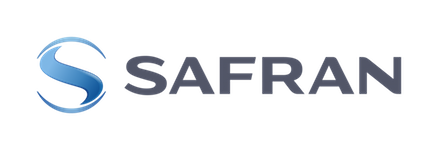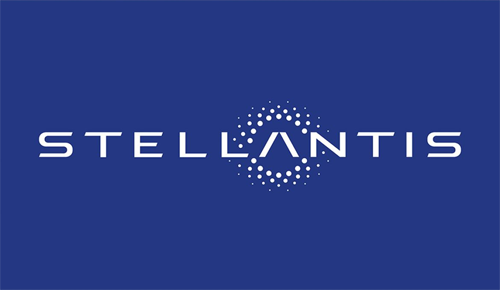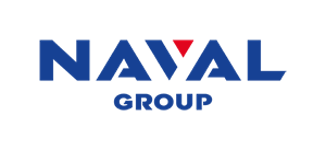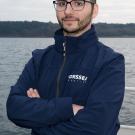
Specialisms
contact
International awareness
During a professional period…
This sequence can be one of two different options ;
- When the apprentice is within an international group, he can ask to carry out a mission in one of the foreign offices or a subsidiary.
- If he is in a smaller structure, the employer can grant a leave of absence to his apprentice. In this case, the experience could take place in a university, a state body, or a company. Ideally, the mission should be in relation with the specialist field of the student.
And/or an academic period
The last academic training sequence (in the 3rd year) from September to Mid-February can be substituted by a training period in one of ENSTA Bretagne’s partner universities.
Youna, 2014 graduate
In the last year, I was lucky enough to take a substitution year in Denmark at the DTU University. They offered a course on naval architecture, on materials…It was a great experience! I discovered a new country and a new way of life.
We were five in our class so had excellent mentoring. We worked 8 hours a day, 3 days/week and we also had a lot of projects, which all added up to a very full week.
I strongly recommend other students try this experience which was very positive. In the first month, I needed a little time to feel at ease speaking in English, then, I felt really good, well received and well mentored.
Active learning
ENSTA Bretagne’s active learning approach takes various forms. The following are a few examples:
Project-based learning
In a simulated professional environment, students work in groups to solve a practical problem. This type of participative learning offers numerous benefits.
Teaching innovation
At ENSTA Bretagne, teaching takes place in an innovation-friendly environment. For example, the Diplôme d'ingénieur (MSc in Eng.) program develops student creativity through cultural awareness workshops on themes including theater and ceramics.
A multicultural environment
In addition to compulsory second-language classes and the option of learning a third language, ENSTA Bretagne offers intercultural training to prepare students for integration into multicultural teams and workplaces.
Valuing extracurricular involvement
In September 2018, ENSTA Bretagne established a student involvement valorization system. Upon request and after validation, students’ extracurricular activities can earn them a degree supplement, a certificate, or extra grade points.
Digital tools (Moodle, ePortfolio, etc.)
Class materials distributed by ENSTA Bretagne teachers are also available on Moodle, giving students continuous access to resources. This online platform is constantly being improved in order to make digital resources even more interactive.
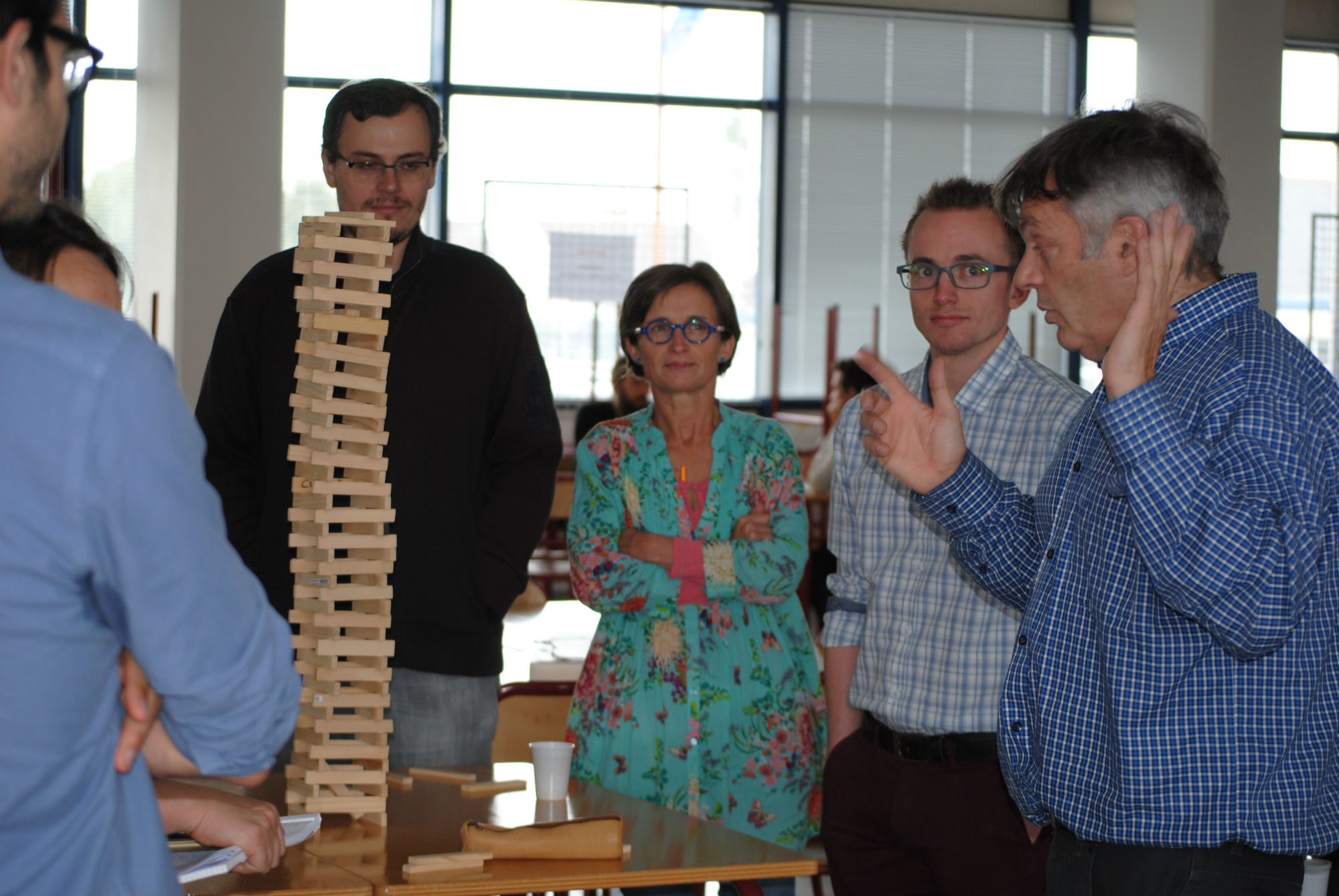
Events to share innovative teaching practices
Teaching workshops
Every year, teachers meet for a day to step back from the classroom, share points of view, and learn about new teaching methods.
In 2018, teachers addressed the concept of multiples, considering how to turn increasing complexity, diversity and uncertainty to their advantage. Grégoire Robin of the Nantes firm Agile Garden spoke at a conference-debate on the contribution of the Agile method (Scrum) to group work and projects. Teachers discussed their practices in relation to the method's 3 main principles: addressing complexity simply, relying on teams, and continuous improvement.
The day ended with thematic panel sessions on the topics of teaching in a foreign language, the possibilities offered by diverse teaching spaces, and multicultural groups (managing heterogeneous groups with different learning styles and a common objective: what to do, and, most importantly, how to do it).
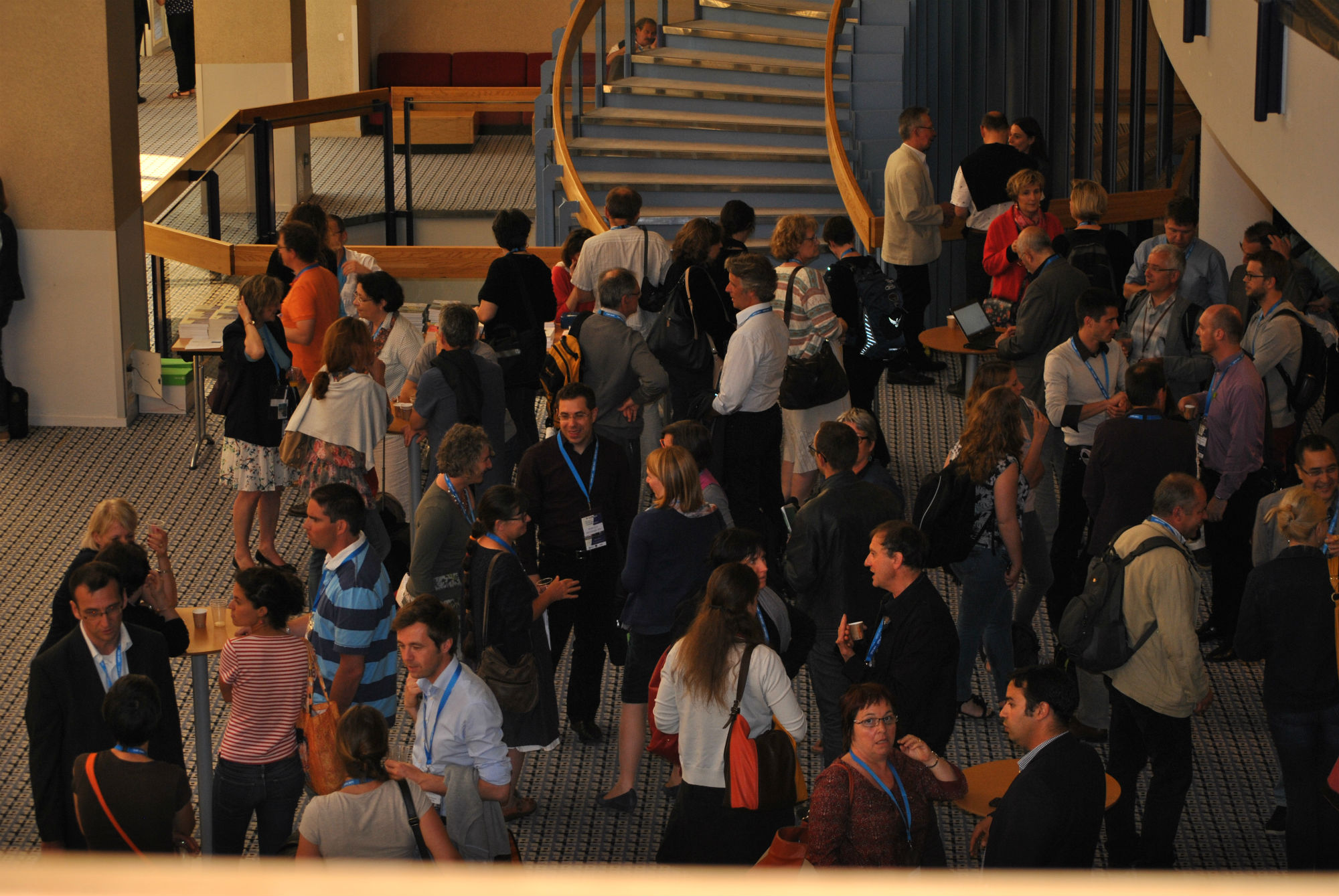
QPES: a scientific symposium on teaching methods in higher education
Since 2001, ENSTA Bretagne has partnered with other higher education establishments to organize this important biennial symposium, attended by hundreds of teachers and research professors.
Questions de Pédagogies dans l'Enseignement Supérieur (Teaching Methods in Higher Education) is a key event in the scientific education community, providing numerous sector professionals with an opportunity to meet and discuss their ideas and experiences, with the goal of improving practice.
Participants explore a broad range of themes including student participation in learning, interculturality, active learning methods and the use of digital tools in teaching.
The next symposium, to be held in Brest in June 2019, will address the theme of collaboration and cooperation in teaching. ENSTA Bretagne will host a pre-symposium for teaching partners on these same themes.
Advanced Modeling of Materials and Structures
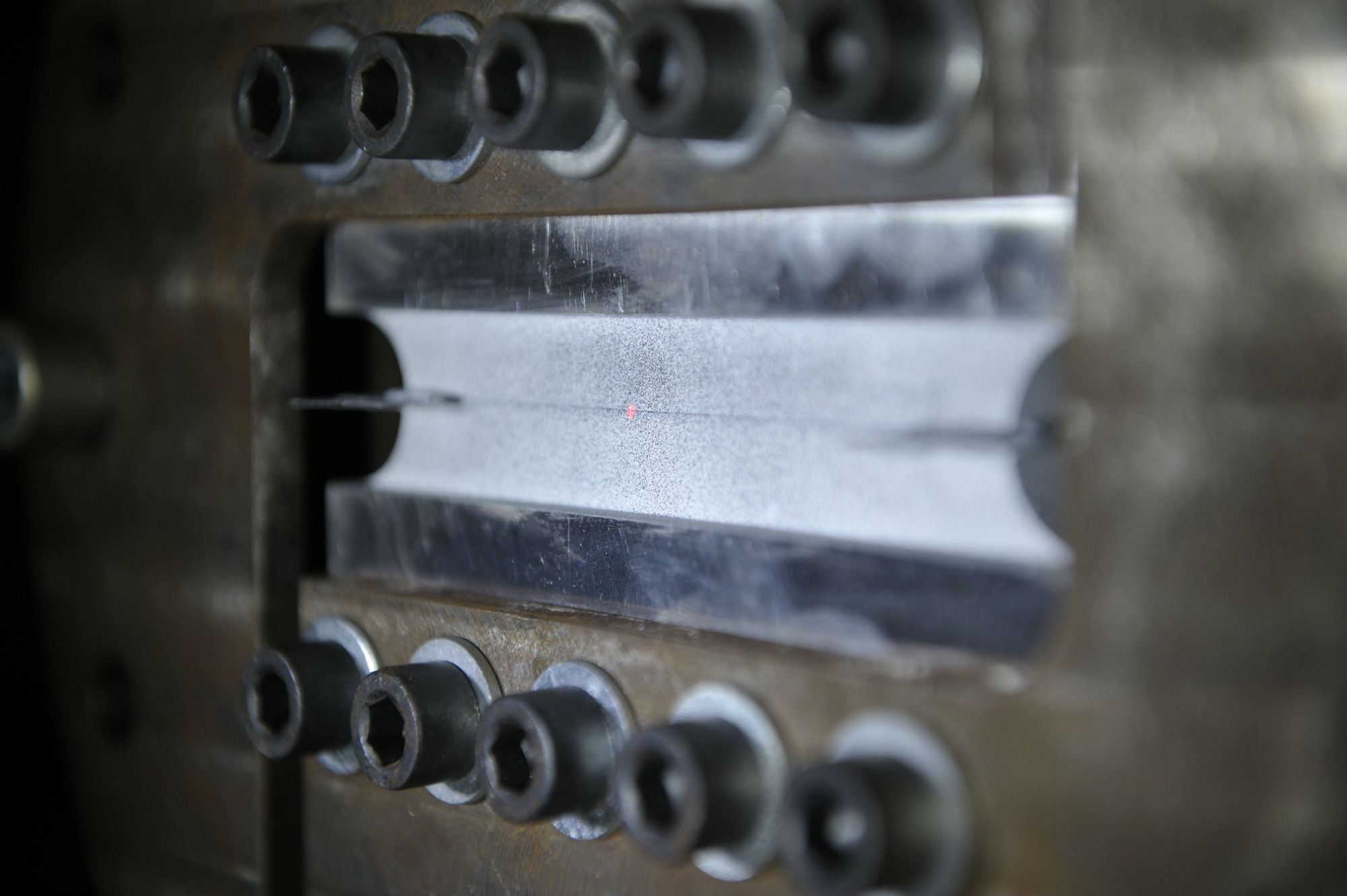
Many sectors are following the trend of using new materials.
In order to make use of composites or light alloys, it is necessary to understand both their behavior and their interaction with the structures in which they are used. This understanding is also useful to materials manufacturers and can impact manufacturing processes.
The Advanced Modeling of Materials and Structures program offers students a fascinating field of study and research drawing on the work of teams at Institut de Recherche Dupuy-de-Lôme (IRDL), whose applied research is carried out in close collaboration with large industrial firms.
Program strengths
A multiplicity of applications
Steel, composites and elastomers have diverse applications in the automotive, medical, naval, aerospace, defense, construction and clothing industries.
Gaining an understanding of their structure, behavior (especially during forming and annealing), aging process and reaction to damage is a necessary first step before their utilization.
Cutting-edge applied research
ENSTA Bretagne's Mechanical Science department research professors working in the IRDL lab have developed high-speed characterization techniques for fatigue properties in materials, assemblies and structures. These techniques have been validated by multiscale experimentation and allow manufacturing partners to predict and efficiently verify the lifespan of mechanical systems.
Continuous innovation
ENSTA Bretagne contributes to numerous innovative projects such as FASTLITE. Financed by the French Environment and Energy Management Agency's Investments for the Future program, this project focuses on the use of lighter materials in the automotive industry. ENSTA Bretagne contributed to the characterization and modeling of assembly strength.
Extensive experimental facilities
The ENSTA Bretagne campus comprises 1,200 m2 of experimental facilities where various types of materials, structures and assemblies can be characterized on a wide range of scales. The MASMECA technology platform is constantly growing.
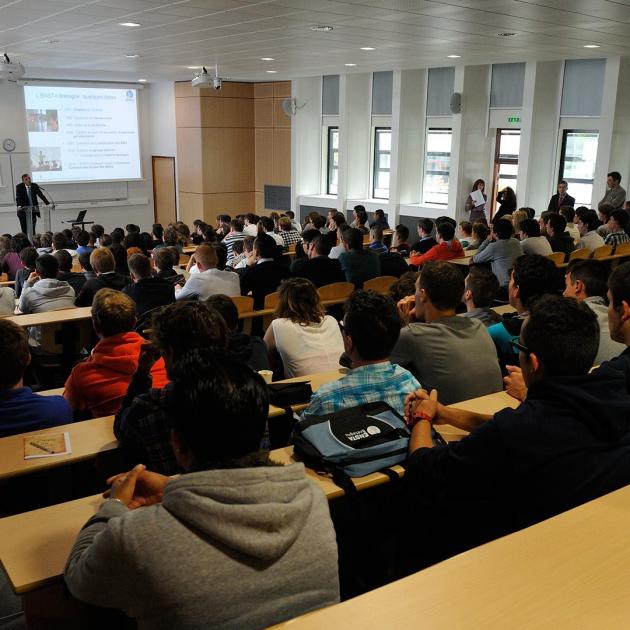
- Découvrir la spécialité "Modélisation avancée des matériaux et structures"
- Admissions :
- après CPGE (math sup/math spé) : admission sur concours Mines-Télécom. Formation en 3 ans ou 4 ans pour les IETA.
- après L3 : admission sur titre, dossier et oral. Formation en 3 ans.
- après M1 ou M2 : admission sur titre, dossier et oral. Formation en 2 ans.
Cette spécialité est offerte aux élèves Polytechniciens dans le cadre de leur 4e année.
- Découvrir ce parcours en Modélisation avancée des matériaux et structures
- Découvrir le Master international en Ingénierie automobile
- Admissions :
- admission sur dossier après L3 : Formation en 2 ans.
Le Master "Ingénierie de conception", parcours "Mécanique, matériaux et génie civil" est délivré par l’ENSTA Bretagne, l'UBO (Université de Bretagne Occidentale), l'ENIB, l’UBS (Université de Bretagne Sud) et l'INSA Rennes.
- En savoir plus sur ce master
- Inscription : UBS
- Contact ENSTA Bretagne : Sylvain Calloch
- Inscription à l’ENSTA Bretagne, rattachement à l’école doctorale SPIN et au laboratoire IRDL
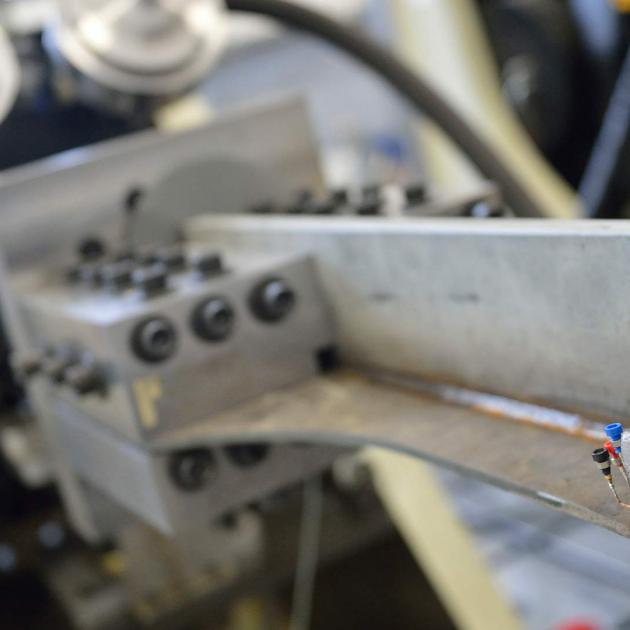
Les recherches sur les matériaux et structures sont au cœur du projet scientifique de l’IRDL, qui réunit le CNRS et les équipes de sciences mécaniques de 4 campus bretons. Des entreprises industrielles de toute la France et de nombreux domaines d’activités s’appuient sur les compétences et connaissances du laboratoire et de l’ENSTA Bretagne pour mener à bien leurs projets de R&D.
Exemples de projets de recherche :
Composée de 5 plateaux techniques, MASMECA concentre de nombreux moyens d’essais en caractérisation dynamique, thermo-mécanique et physico-chimique.






